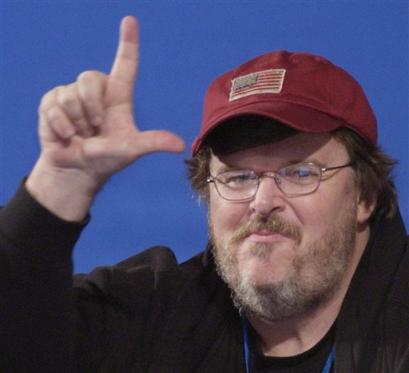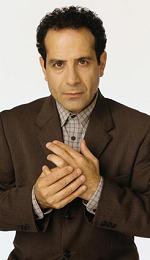A while back there was a flap over Jim Dobson and comments he made regarding a video involving SpongeBob SquarePants.
To hear some tell it, Dobson accused SpongeBob of being homosexual or of promoting homosexuality in the new video.
Since I have previously said that I find SpongeBob funny, a number of readers sent me links to stories and asked me for comment.
I didn’t comment at the time because of what I considered an absence of hard fact. The stories seemed shaky to me–long on conjecture and short on fact. Frankly, I didn’t trust them. I suspected that something was being blown out of proportion somewhere.
Sure enough, by coincidence I happened to catch an appearance of Dobson on the Hannity and Colmes program in which he vociferously denied having claimed that SpongeBob was gay or that the video–which only has a few seconds of SpongeBob in it and which features just about every major cartoon character currently on Nickelodeon and similar networks–promotes homosexuality.
What he had said was that certain teaching materials associated with the video (which features cartoon characters singing the song "We Are Family" and which is to be distrubuted to schools for showing to children) are in some way supportive of homosexuality. He said that SpongeBob and the video were fine in and of themselves, but they were being used as part of a bait-and-switch strategy on school kids.
There’s some merit to that charge.
While the teaching materials that Dobson (is alleged to have) quoted aren’t readily available, the website of the makers of the video is, and it contains the following "Tolerance Pledge":
Tolerance is a personal decision that comes from a belief that every person is a treasure. I believe that America’s diversity is its strength. I also recognize that ignorance, insensitivity and bigotry can turn that diversity into a source of prejudice and discrimination.
To help keep diversity a wellspring of strength and make America a better place for all, I pledge to have respect for people whose abilities, beliefs, culture, race, sexual identity or other characteristics are different from my own [SOURCE].
The (probably deliberately) ambiguous phrase "sexual identity" can well be construed as referring to those who have "sexual identities" other than the straightforward biological categories "male" and "female." It likely is meant to cover people of one biological sex who have homosexual (or other) temptations. Certainly it’s ambiguous enough that it lends itself to this interpretation. The words are clunky and suggestive of an interpretation meant to cover more than what the simple word "sex" would have covered.
If I were a parent with a kid in school, I’d certainly be critical of any attempt to get my kid to say a pledge like that, including showing him a video of his favorite cartoon characters that is sponsored by an organization promoting this pledge.
Even apart from the "sexual identity" clause, there are better, more direct, and more effective ways of teaching kids to be tolerant of the legitimate differences of others besides encouraging them to say pretentious pledges. For that matter, there’s too much "tolerance" rhetoric in the schools (and in society) than is good for us, as it’s used as a codeword to stigmatize those who want to maintain traditional moral values.
"Tolerance" is not an abstract virtue any more than "intolerance" is an abstract vice. Some things ought not to be tolerated (murder, for example). Whether tolerance in any particular case is virtuous depends entirely on what one is proposing as the object of tolerance. Propose the wrong object and tolerance of it is a vice.
Now, why have I decided to comment on all this now when I didn’t at the time?
Basically, because I ran across
THIS WENDY McELROY EDITORIAL THAT CAME OUT LAST WEEK.
She says a number of things in it that I find valuable, including underscoring the basic point that people shouldn’t be dogpiling on Dobson or creating a media furor without first investigating the facts of the case, and the facts in this case are precious few.
I always like it when people in the media point out that we shouldn’t go off half-cocked before we have the facts (the latter being a chronic danger of their profession).
McElroy also points to contributing factors that led to the furor, including the fact that the media is simply hostile to Dobson.
I’d add an additional contributing factor that McElroy fails to mention: SpongeBob has been at the center of rumors of homosexuality for some time. I’ve encountered the "SpongeBob is gay" rumor a number of times from well-meaning Christians who have never watched the show but who have heard it from others.
Lemme set the record straight on that: So far as one can tell from the show, SpongeBob ain’t gay. He even has a (kind of) girlfriend. (I say "kind of" because shows meant to be enjoyed by young children tend not to get into romance very far these days.) It is very easy to explain what SpongeBob is:
He’s Jerry Lewis.
Like Jerry Lewis, SpongeBob is a comic character trapped perpetually between childhood and adulthood. He’s a perpetually awkward character who in some ways functions as an adult (he has a job, a house, he lives on his own) but has many of the mannerisms and limitations of a child (he’s socially inept, can’t drive a car, has a high-pitched voice, and is naive as all get out).
There are only two major differences between SpongeBob and Jerry Lewis: (1) He’s a sponge, and (2) he’s actually funny.
I’m given to understand (though I have not verified this) that some in the homosexual community have tried to adopt SpongeBob as a mascot, and it’s easy to understand why they might want to do so. Many in the homosexual community (like any community) enjoy the thought of popular figures being members of their community, and the fact that SpongeBob is a popular and perpetual awkward man-child unlikely to ever overtly contradict the idea that he’s gay (when was the last time you saw a cartoon character do that?) makes him a tempting target.
Indeed, there is even an impulse in the homosexual community to take wholesome images of adolescence and turn them into a kind of homosexual parody. That’s why homosexual men dress up as Judy Garland from The Wizard of Oz at gay pride parades. Judy Garland’s character Dorothy is such a wholesome image of a person trapped between childhood (where the character was) and adulthood (where the actress clearly was) that homosexual activists have delighted in corrupting that image.
Well, that’s their lookout. I’m not about to let the fact that some of them have tried to subvert Dorothy into some kind of gay icon stop me from enjoying The Wizard of Oz, and if some are trying to do the same for SpongeBob, I’m not going to let that stop me from laughing at his humor.
All this does go to the question of why the Dobson vs. SpongeBob thing took off as fast as it did, though.
Though I appreciate much of McElroy’s editorial, I’m not persuaded by all of it. In particular, I’d cut Dobson more slack than she does. I’d also challenge her on one particular point. She writes:
[O]ne of the first questions I would ask is whether he would object to cartoon characters being used to inculcate sexual values with which he agrees. Frankly, I doubt he would protest Winnie the Pooh being used to advance the traditional family or the choice of women to become mothers and housewives.
Yet those choices, no less than homosexuality, are politically charged and offensive to some.
After beating up on others for conjecturing rather than checking the facts, it’s a little surprising that McElroy would feel to free to conjecture what Dobson would say about a situation without checking with him.
That aside, I’ll speak directly to the merits of the question she raises: What schools should do is reinforce the traditional moral values that society needs to keep running and that promote human dignity. Heterosexuality, the traditional family, and the choice of women to become mothers and housewives are high on that list. Those are the things that keep society running and they should be encouraged for all too obvious reasons.
If American social fabric has disintegrated to the point that this idea is now taboo in schools, all I can say is, "Well, that’s one more reason my children (should I be so fortunate as to have any) will never be placed in public schools."

 Yes!!!
Yes!!!